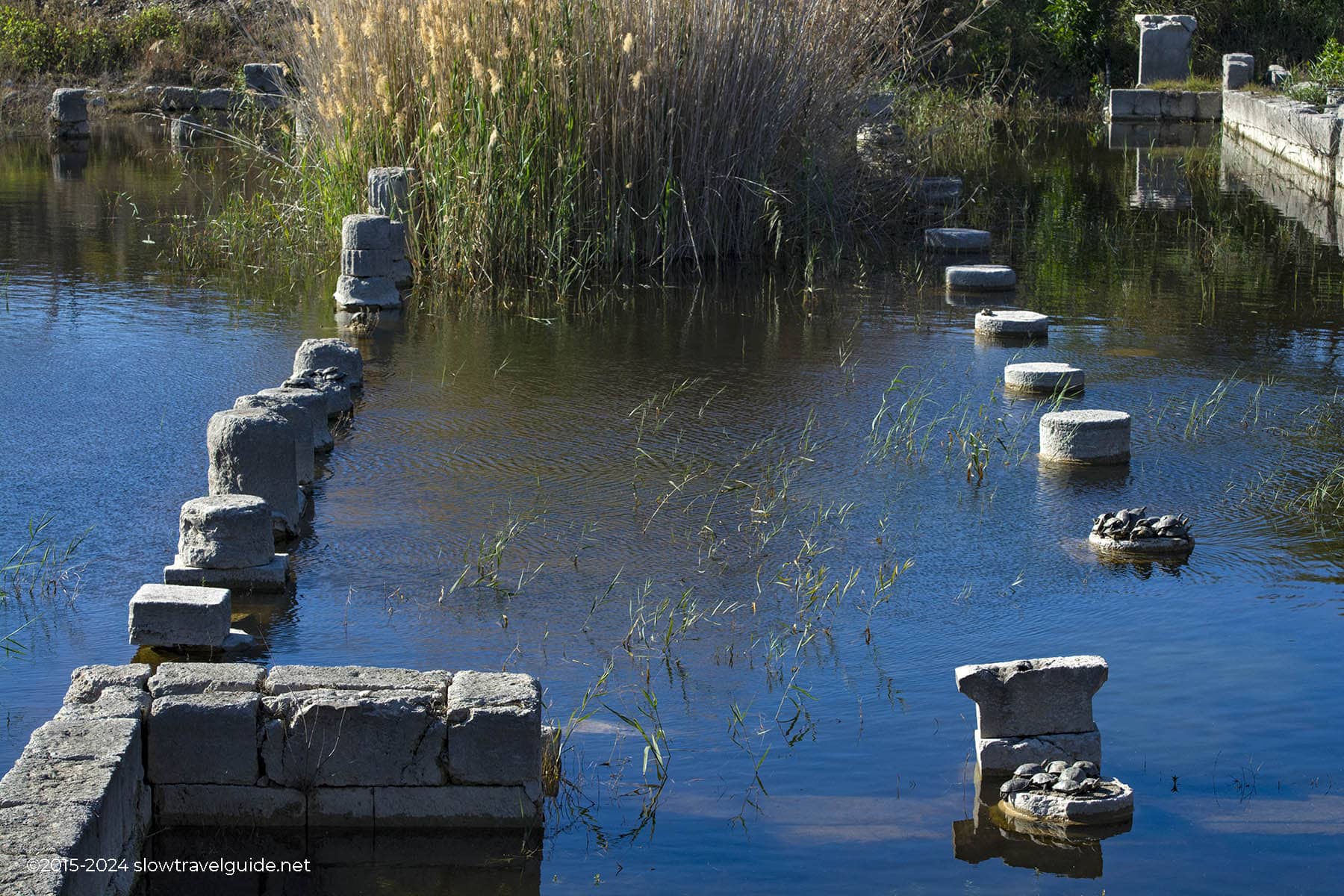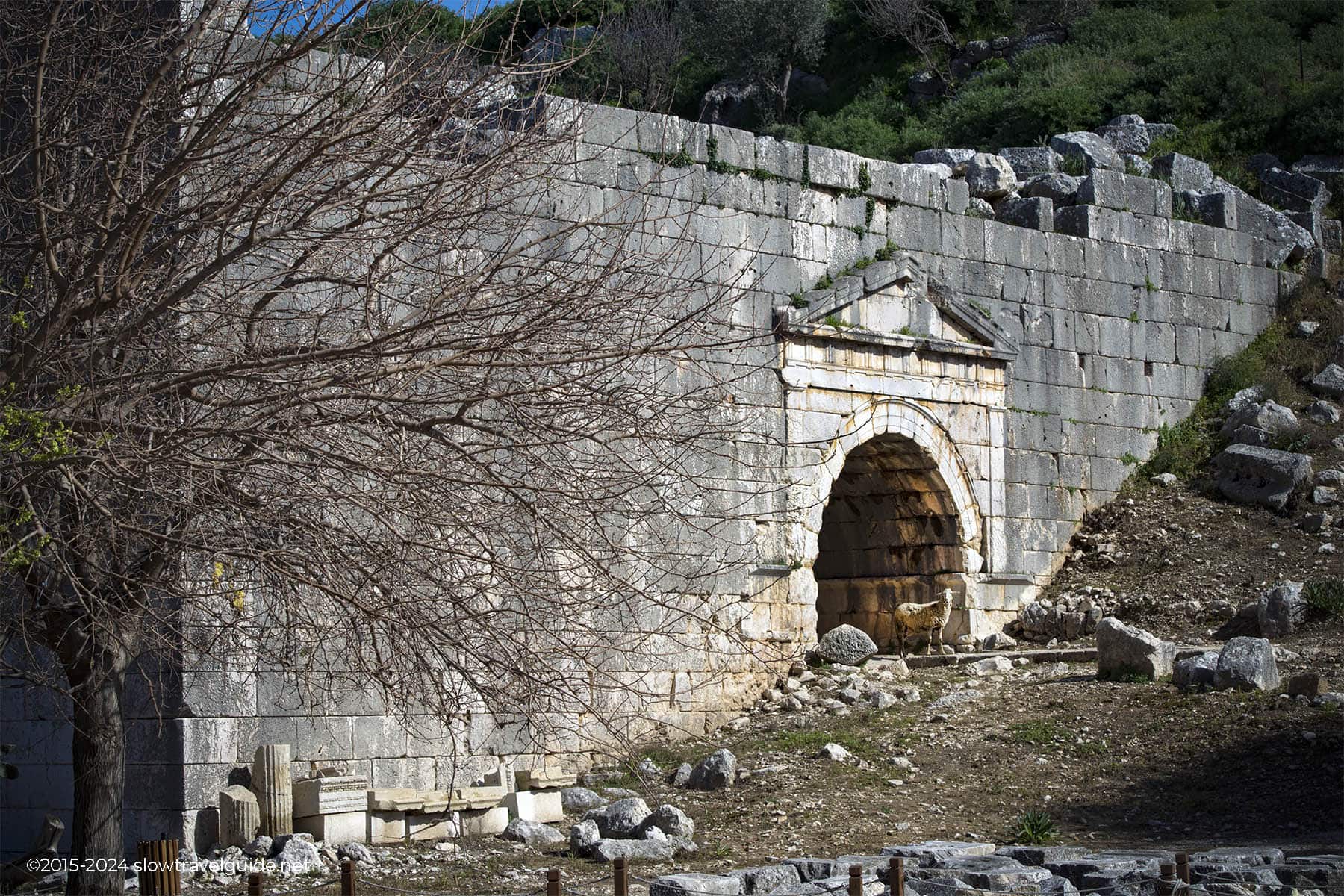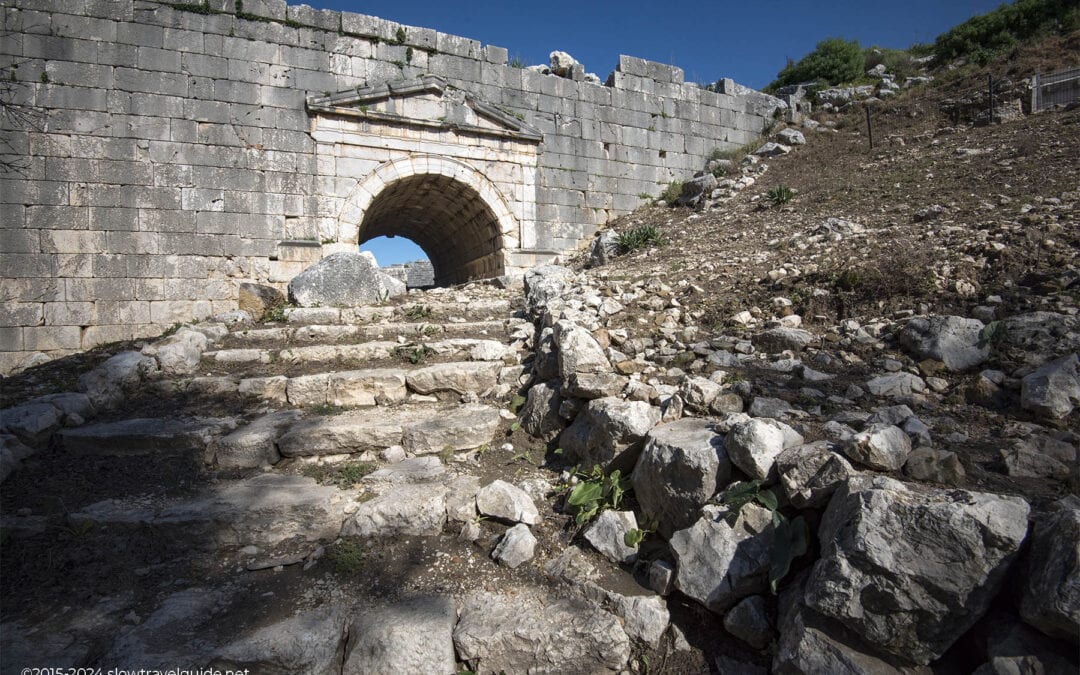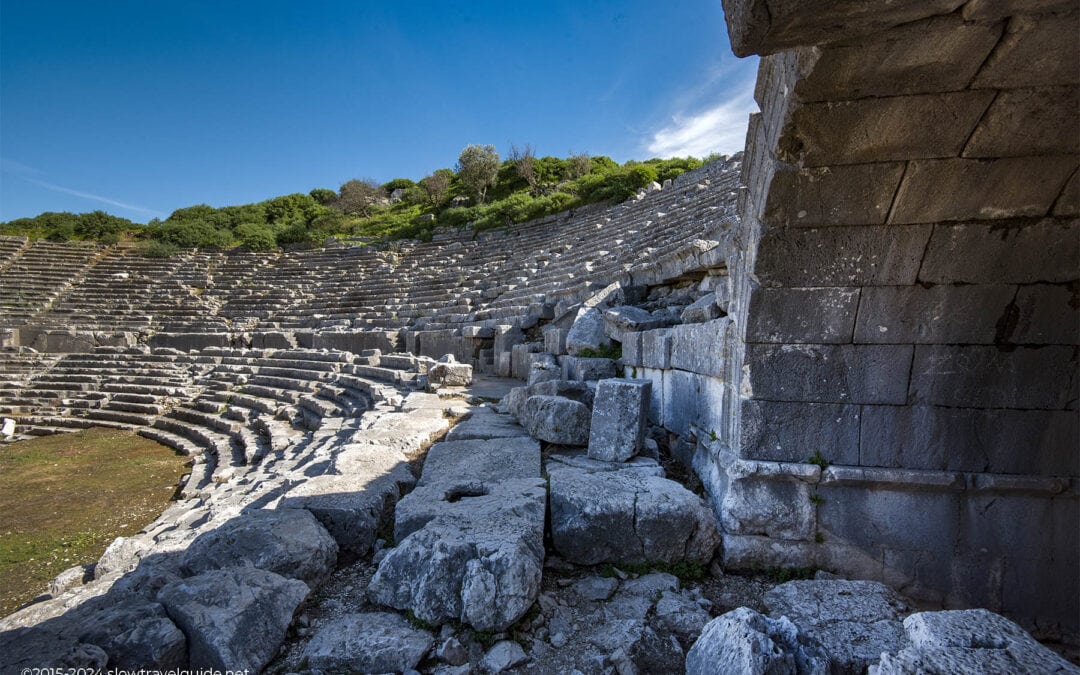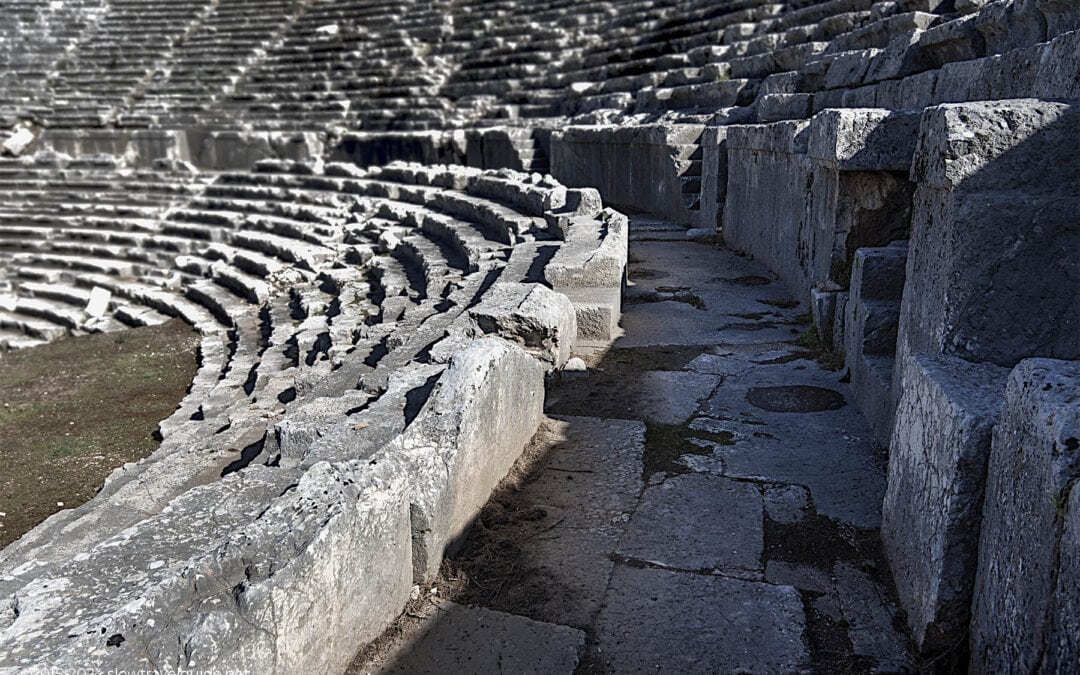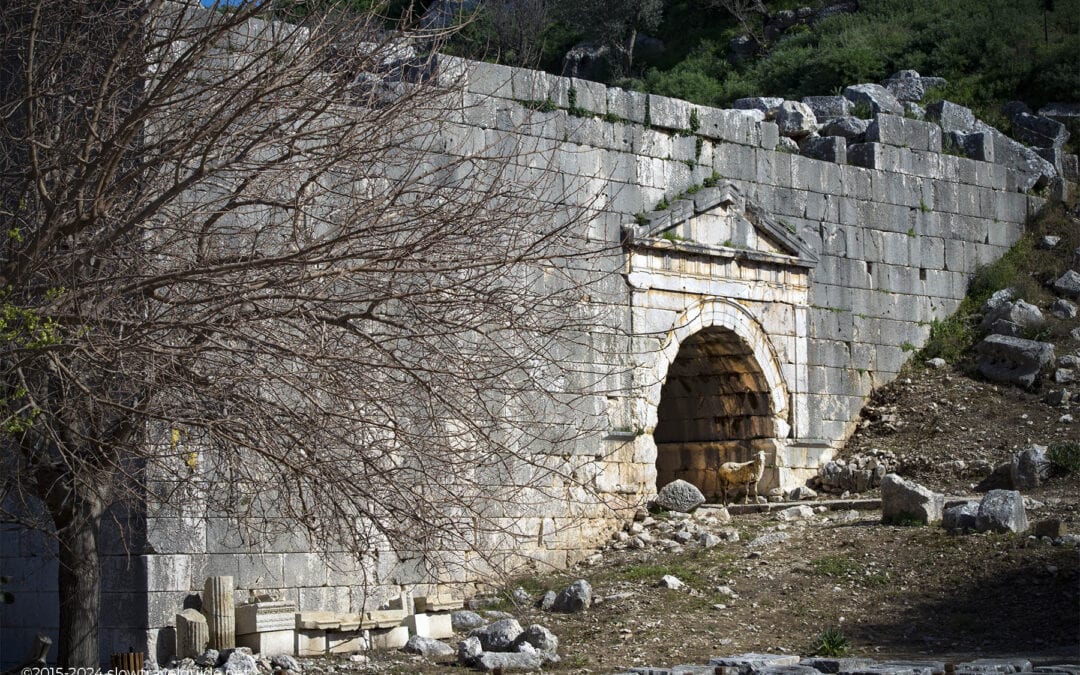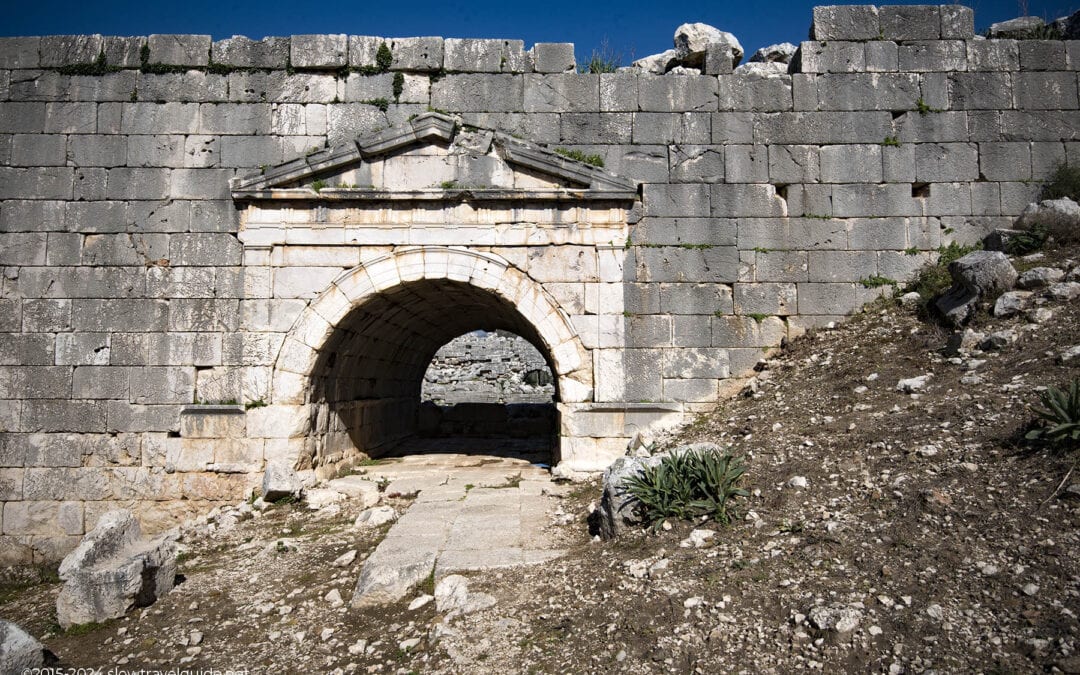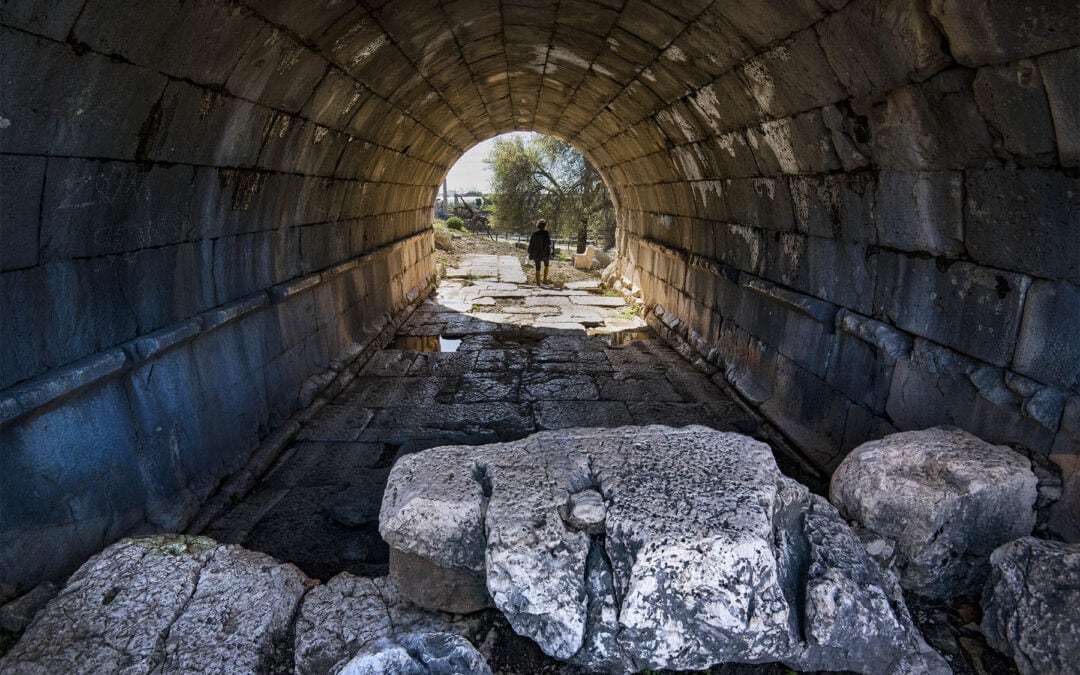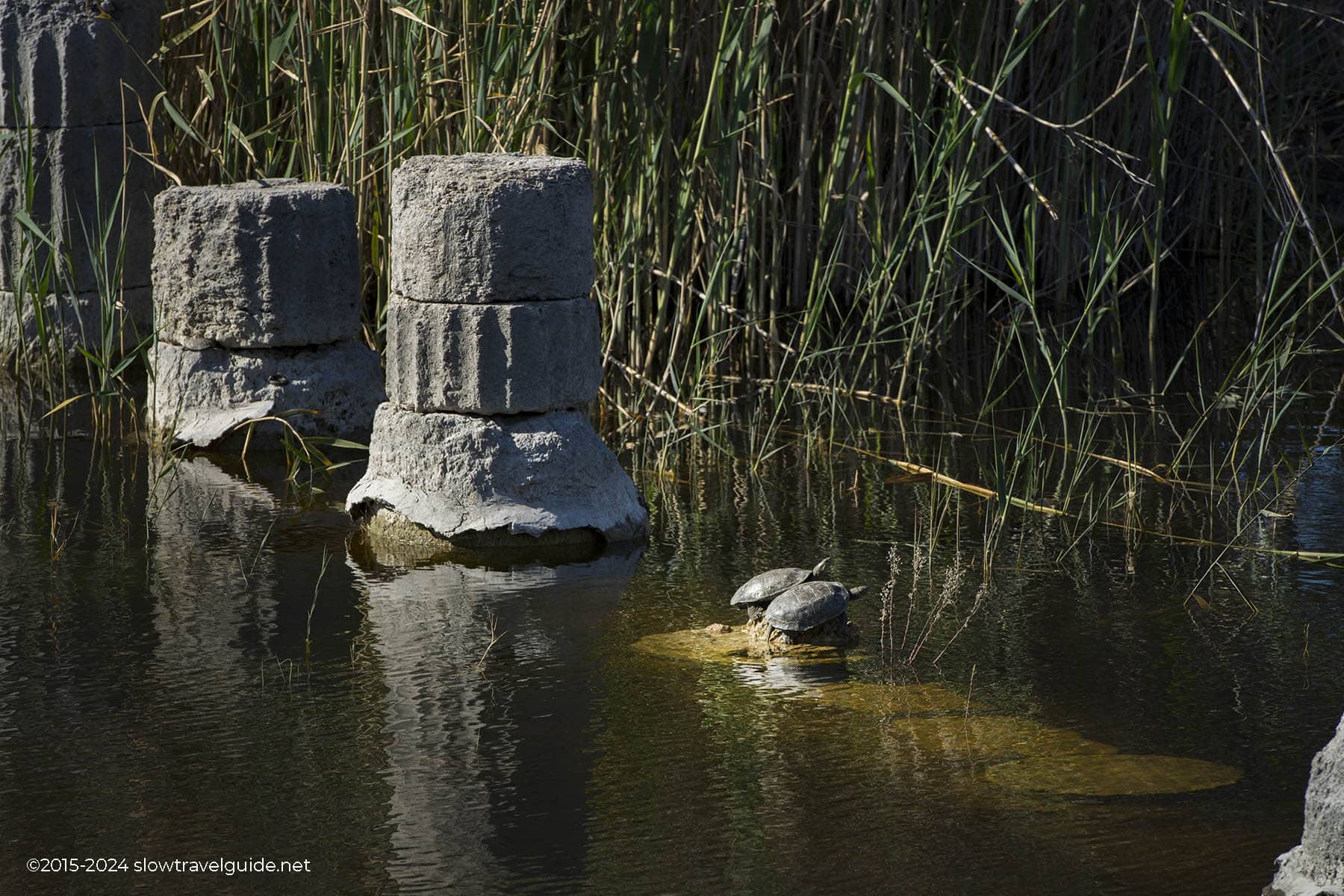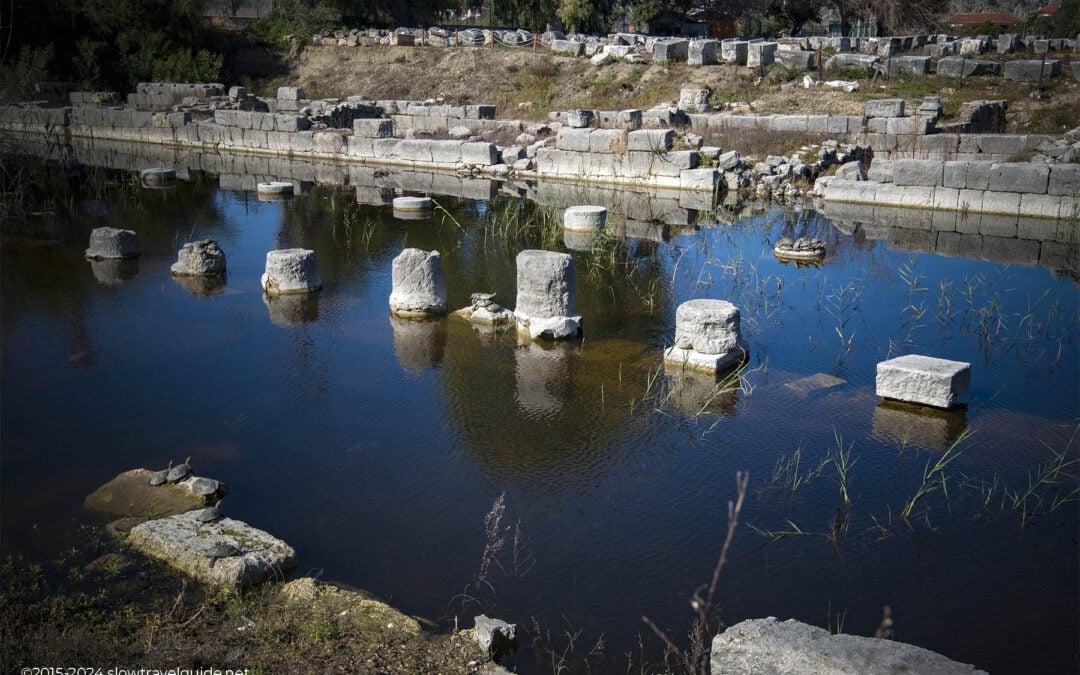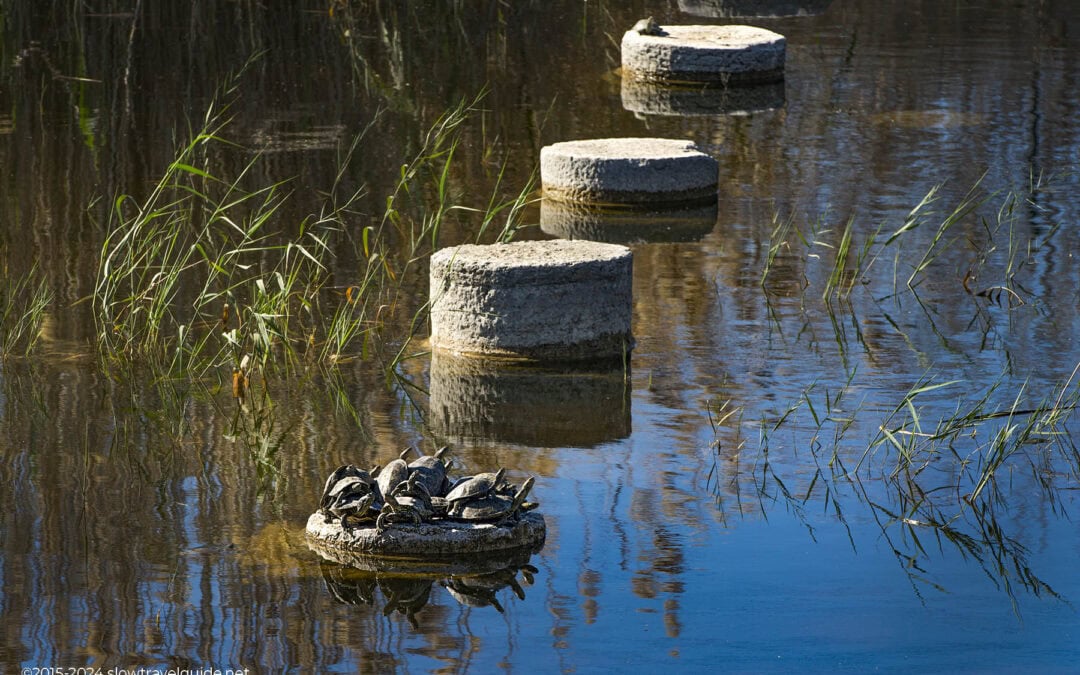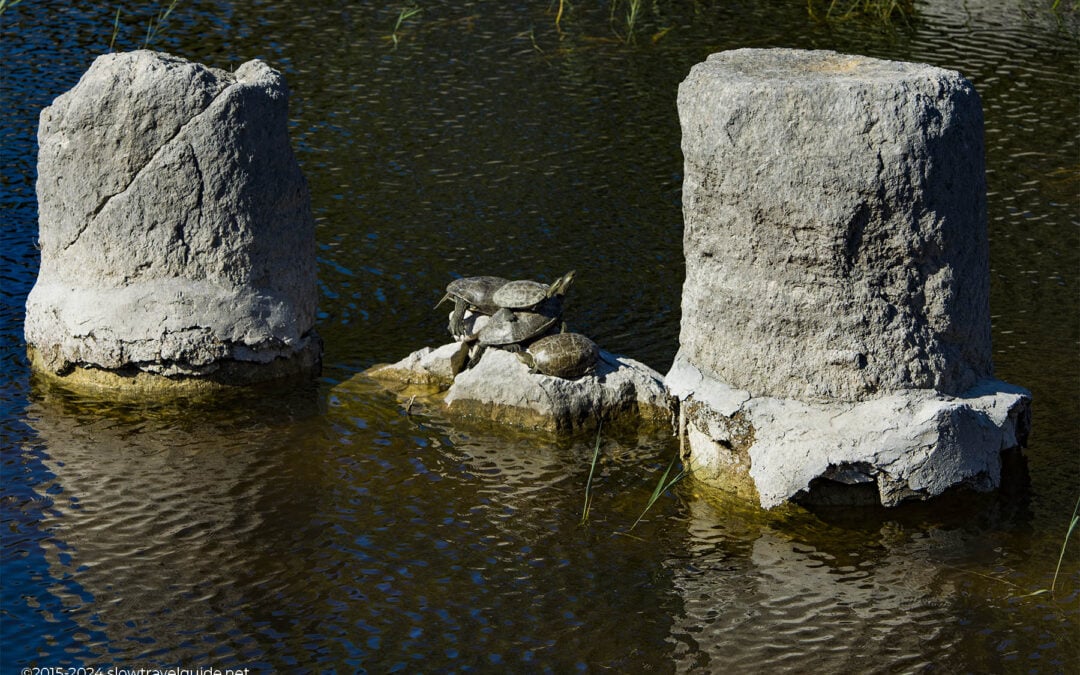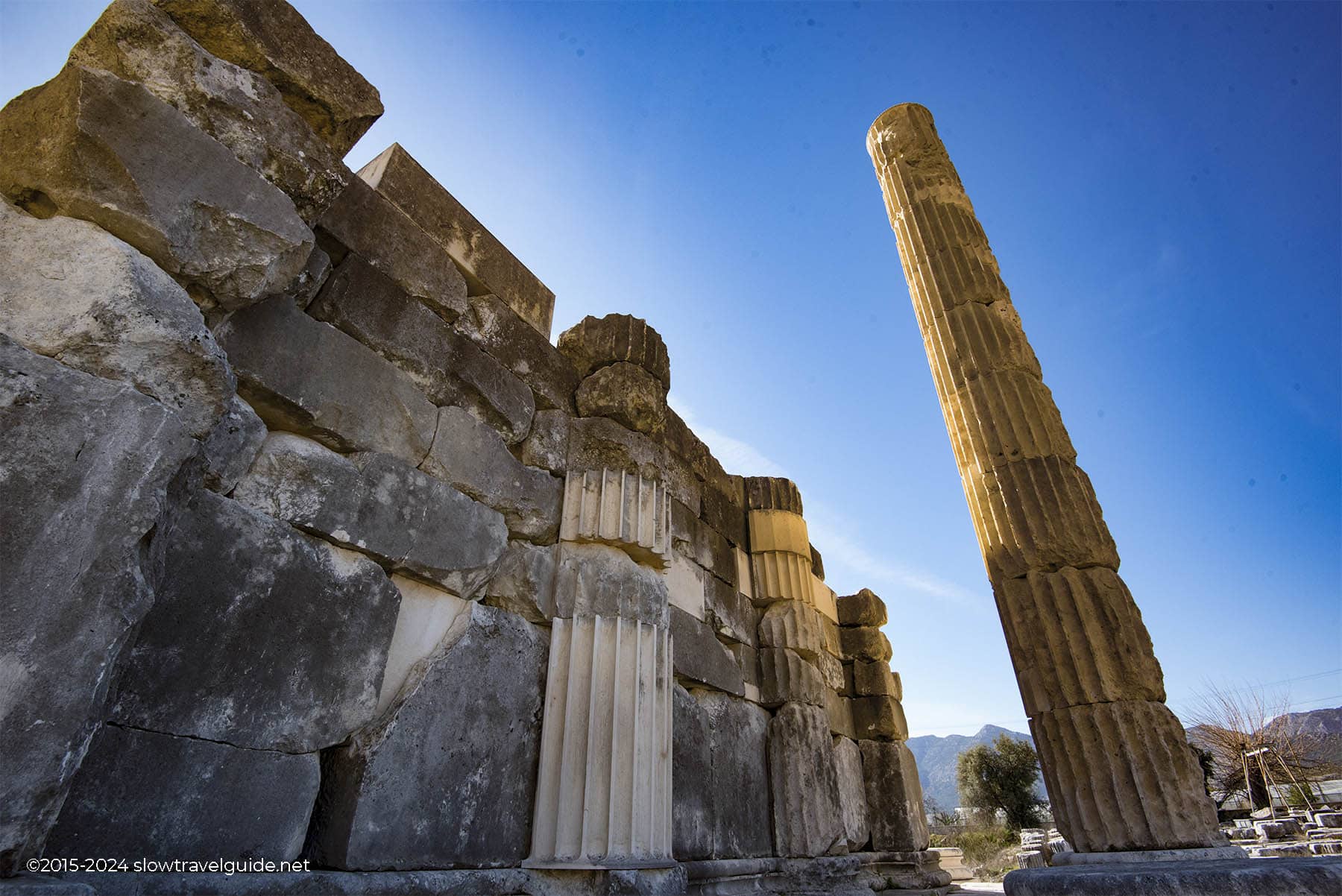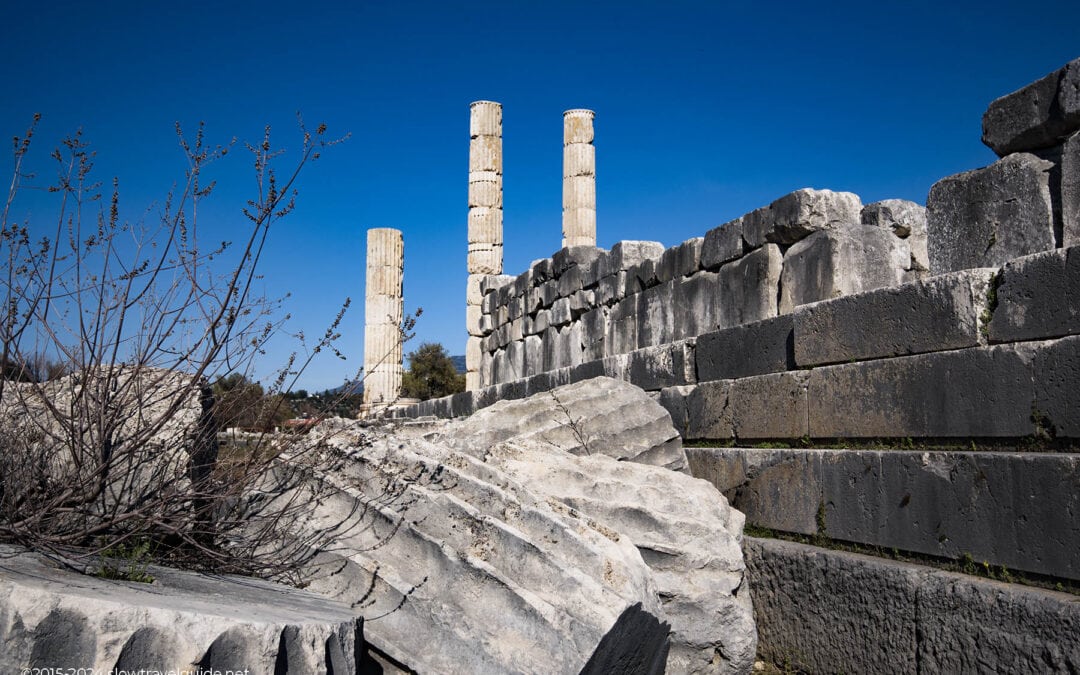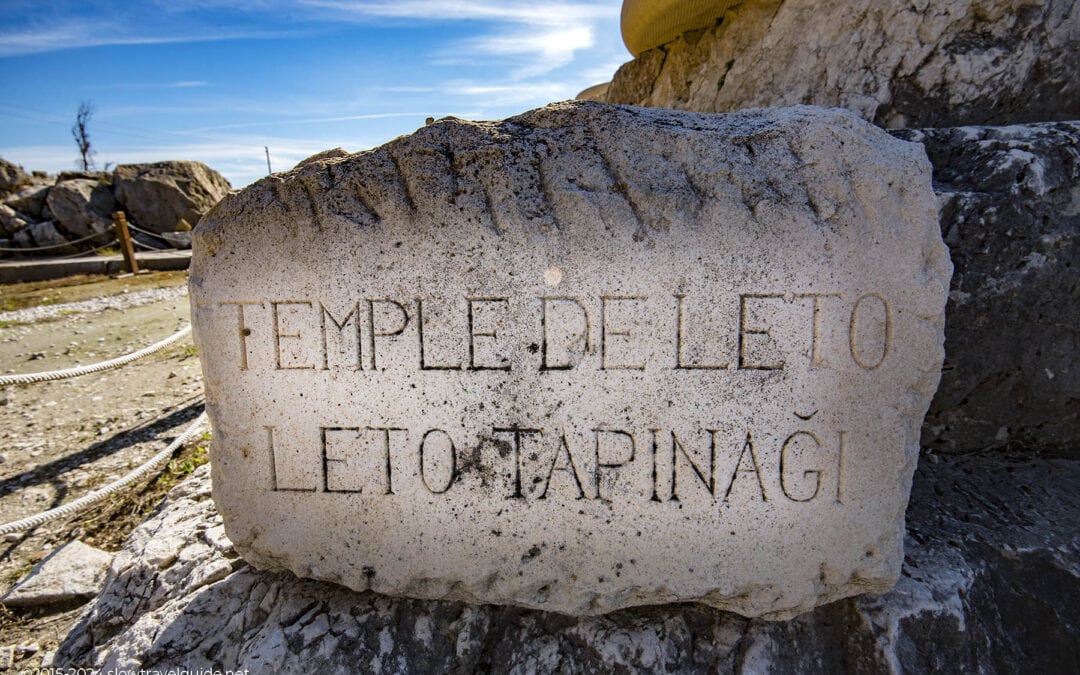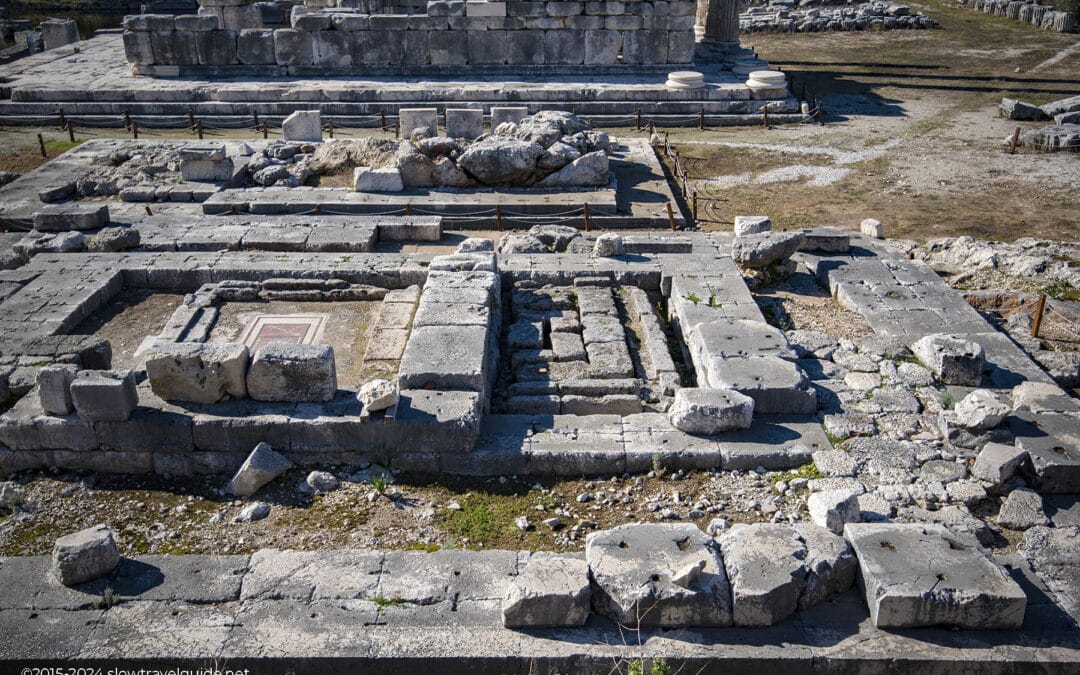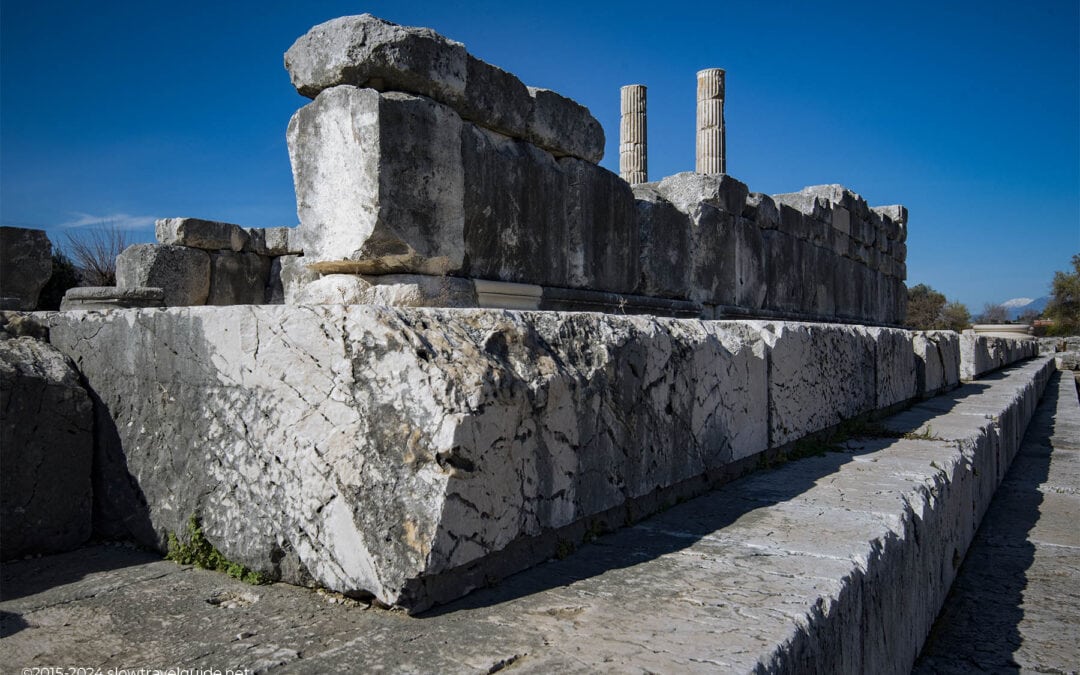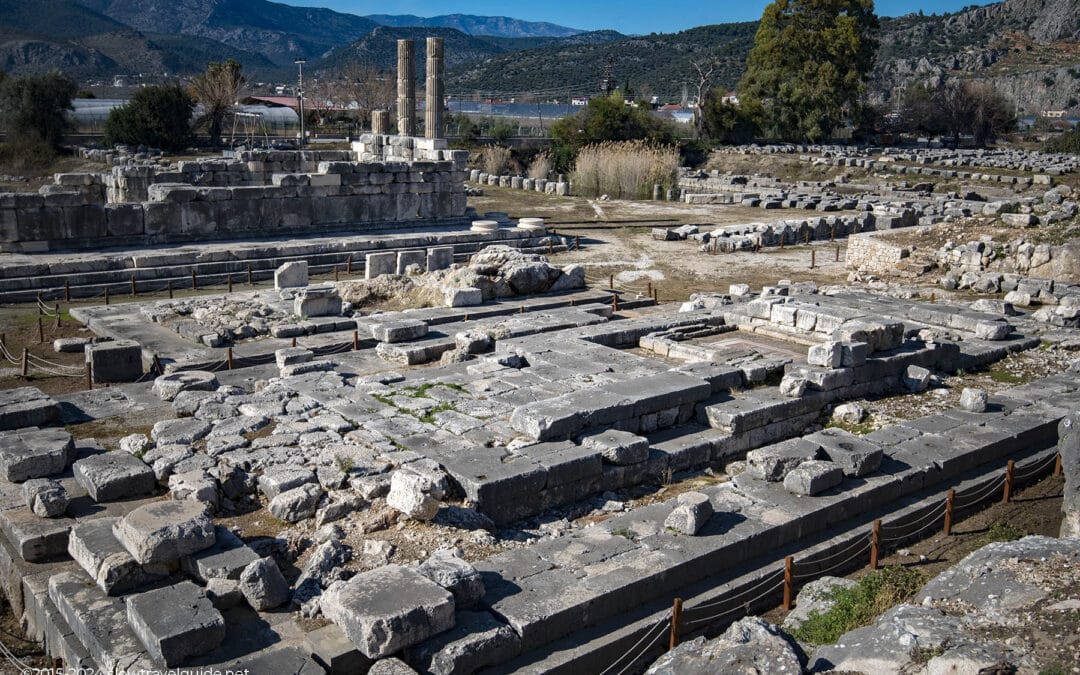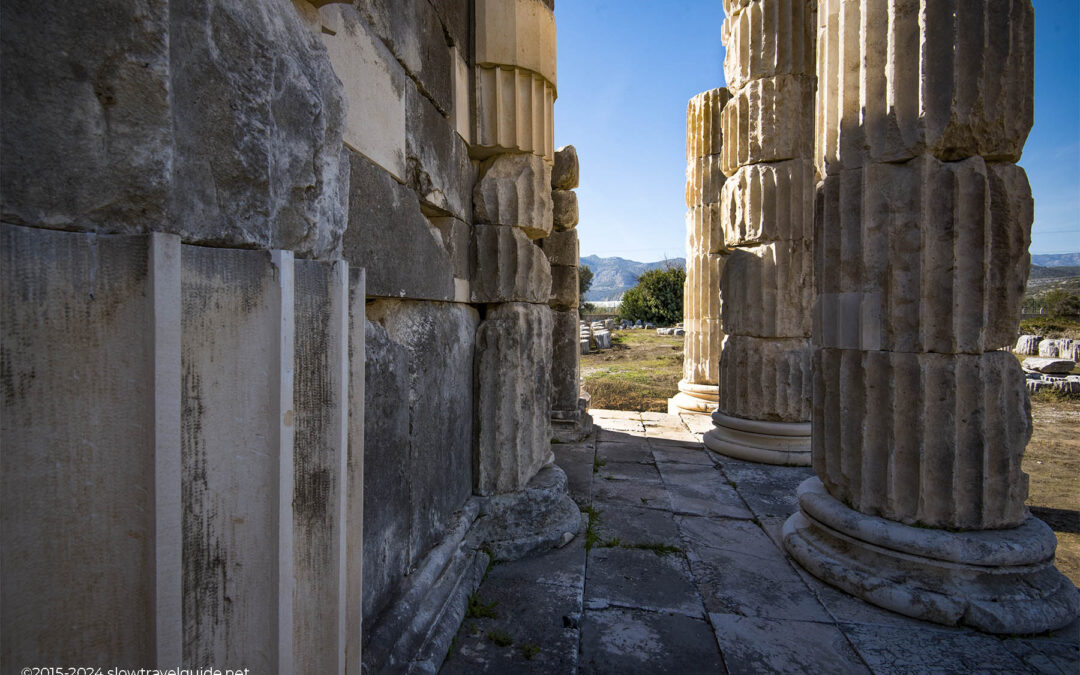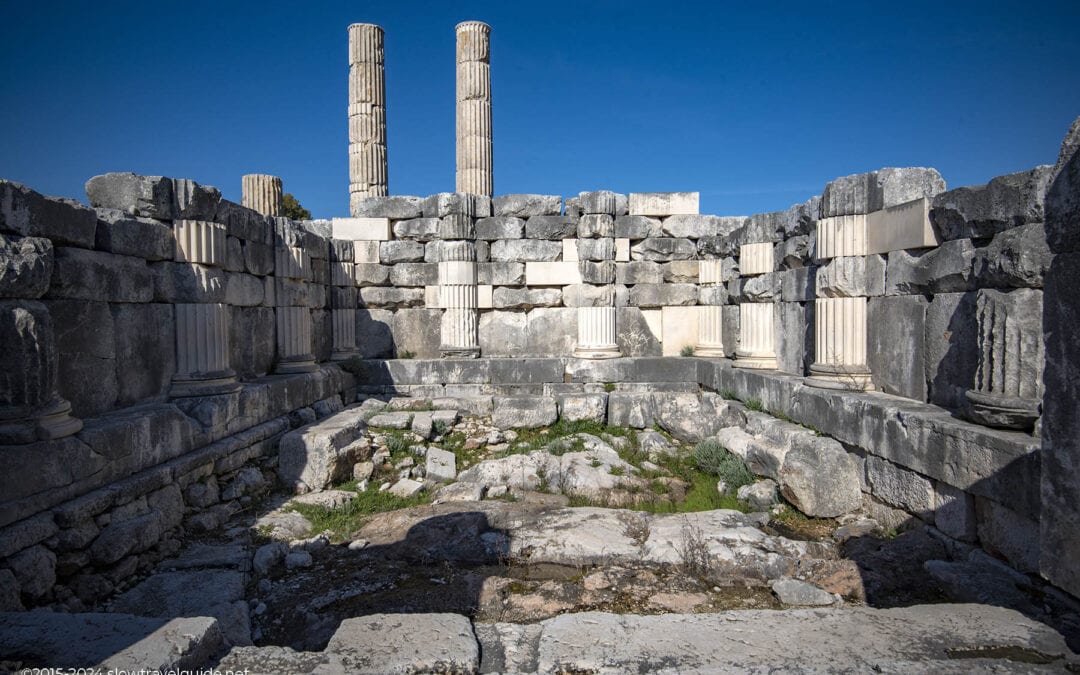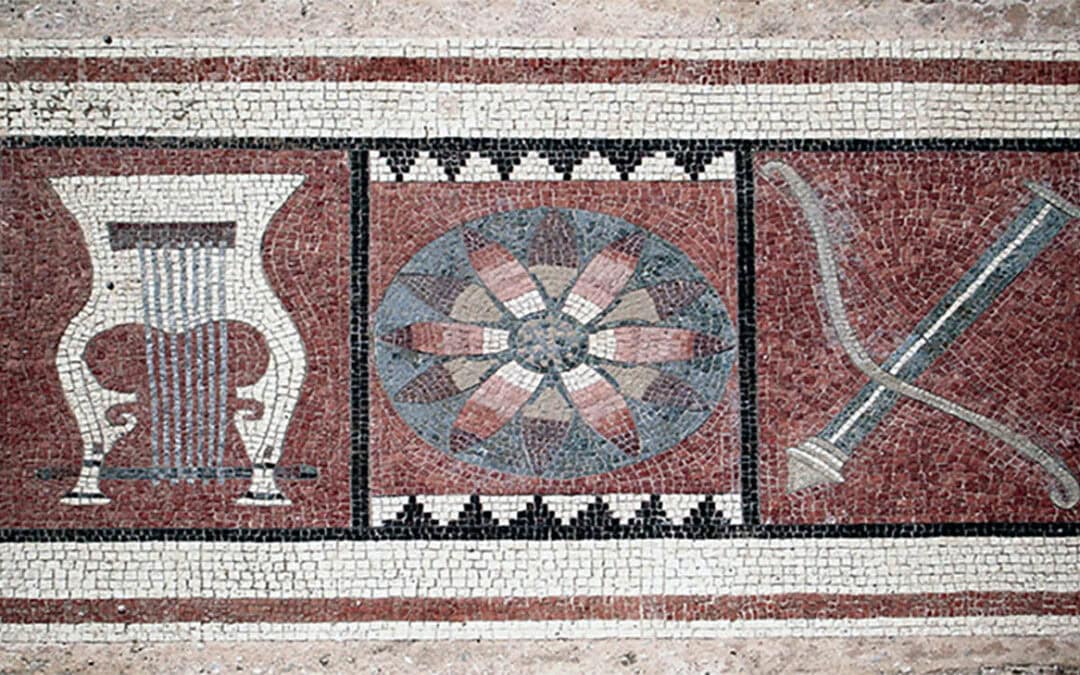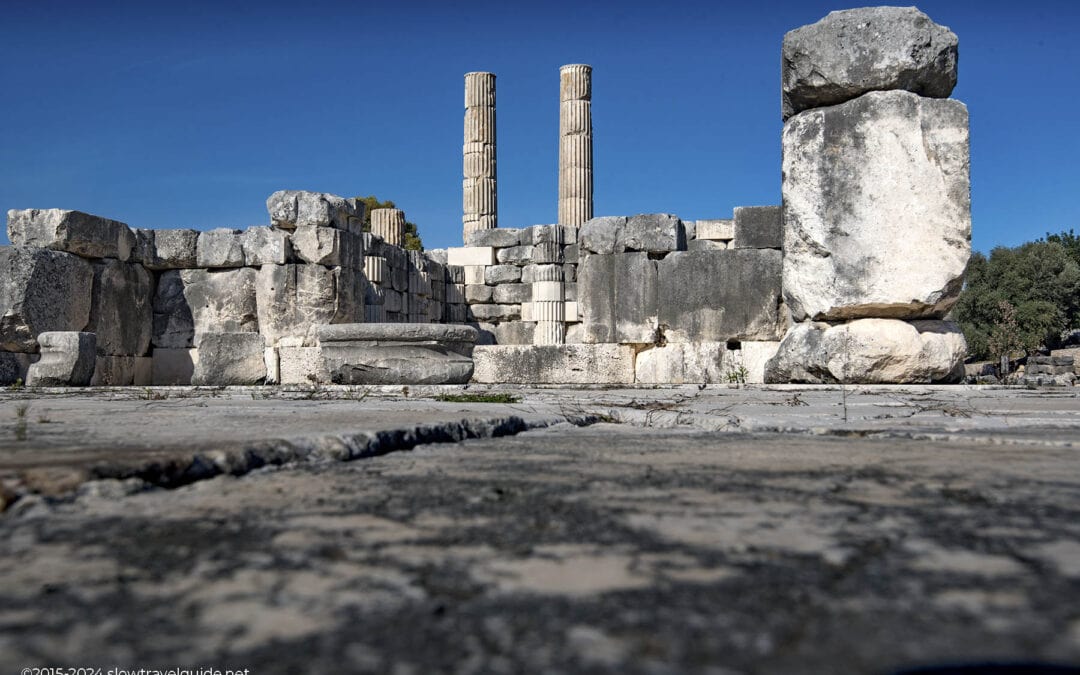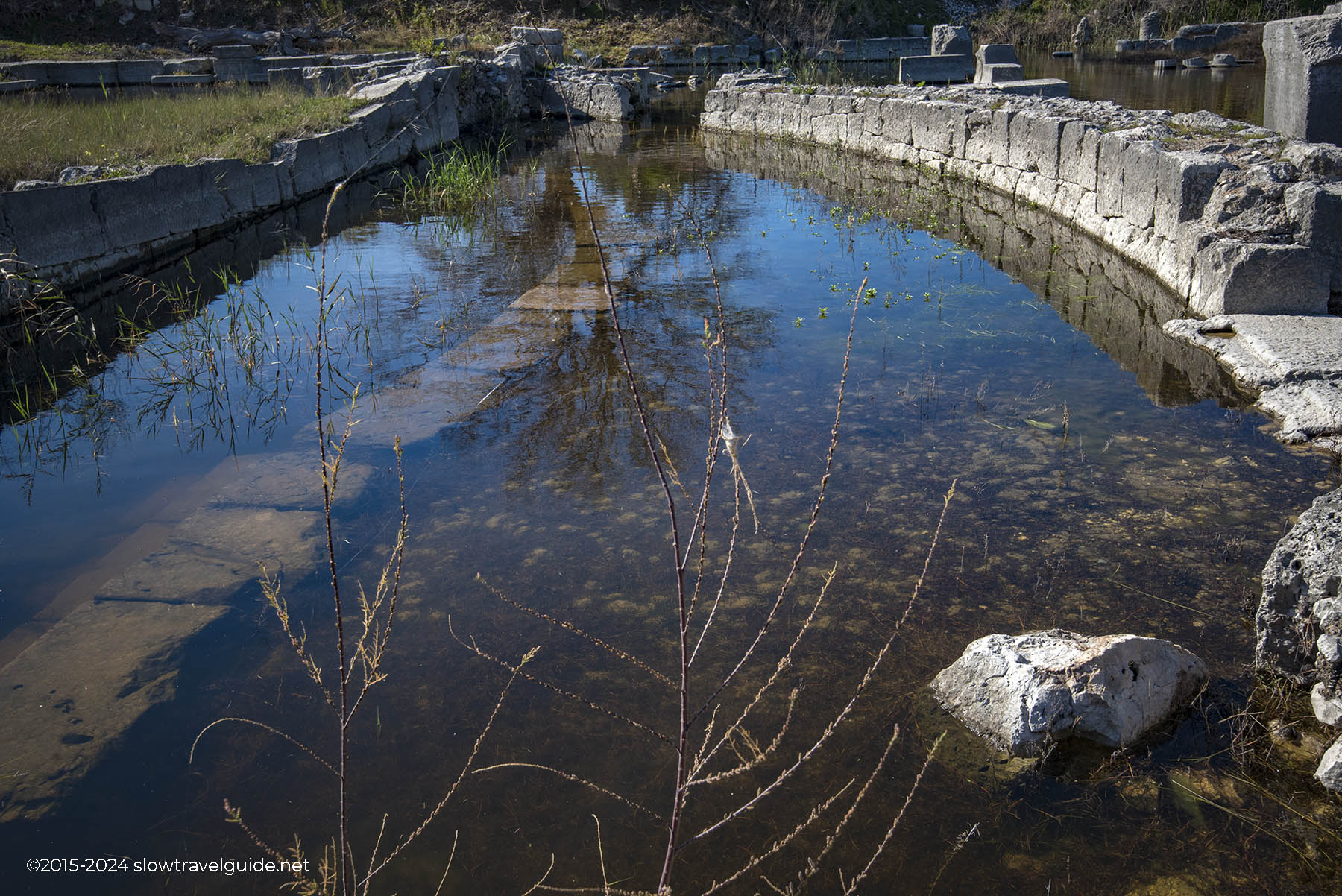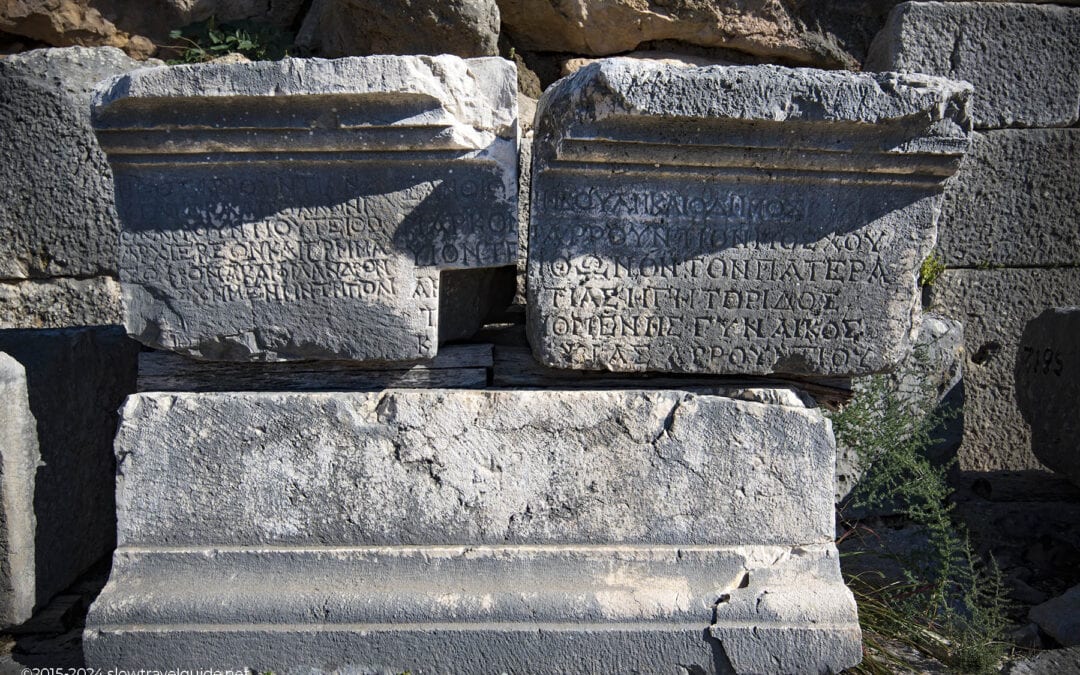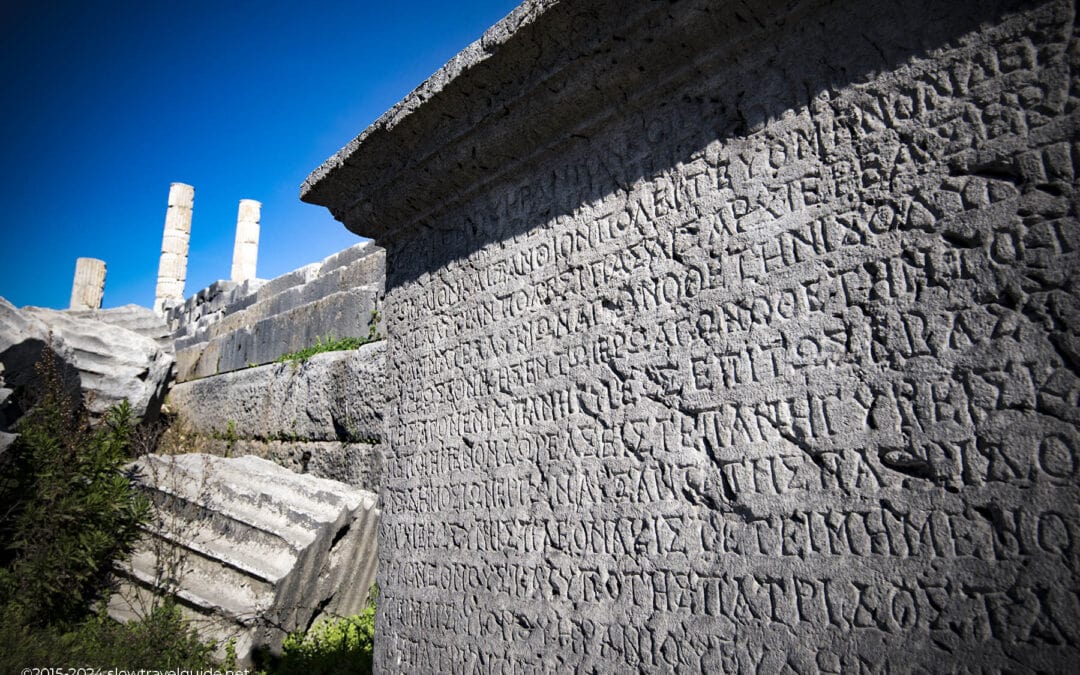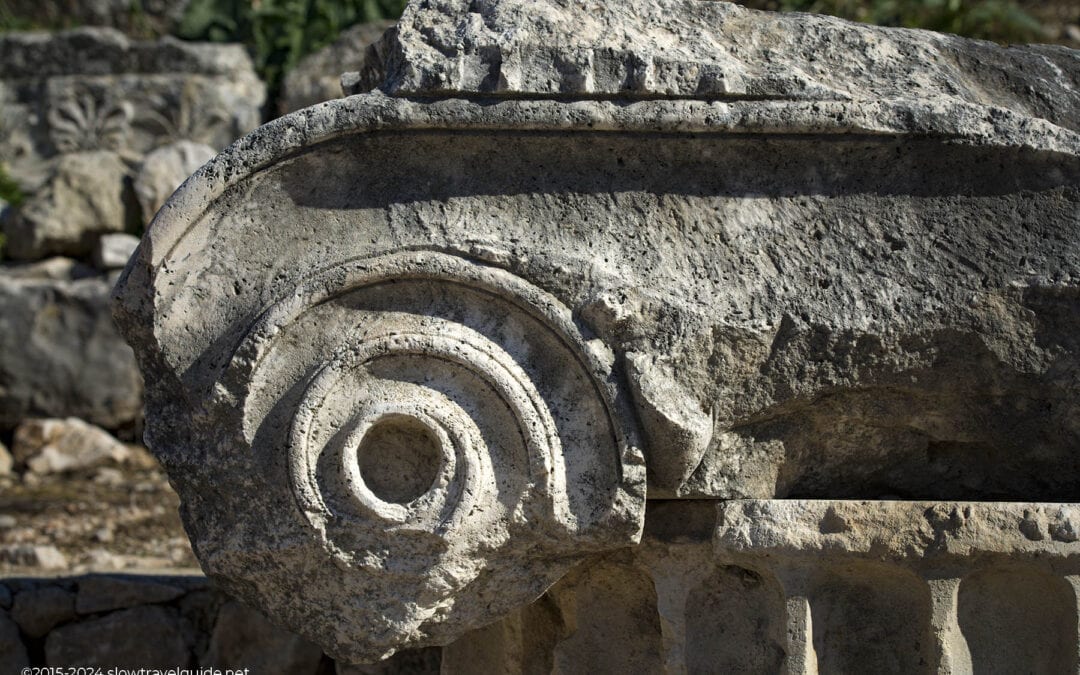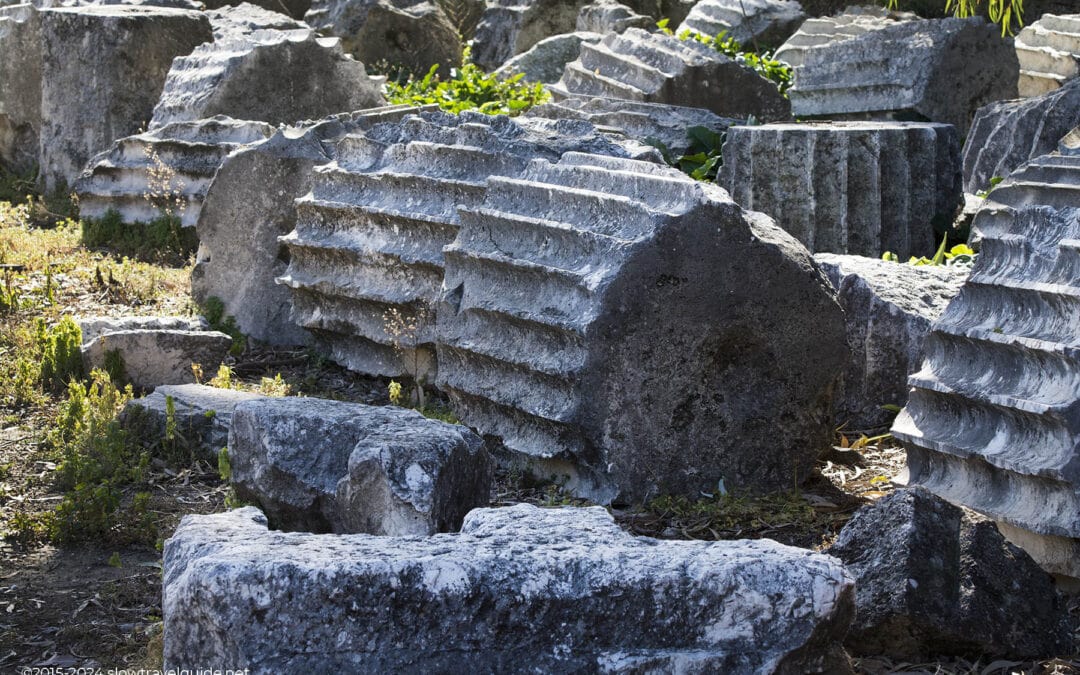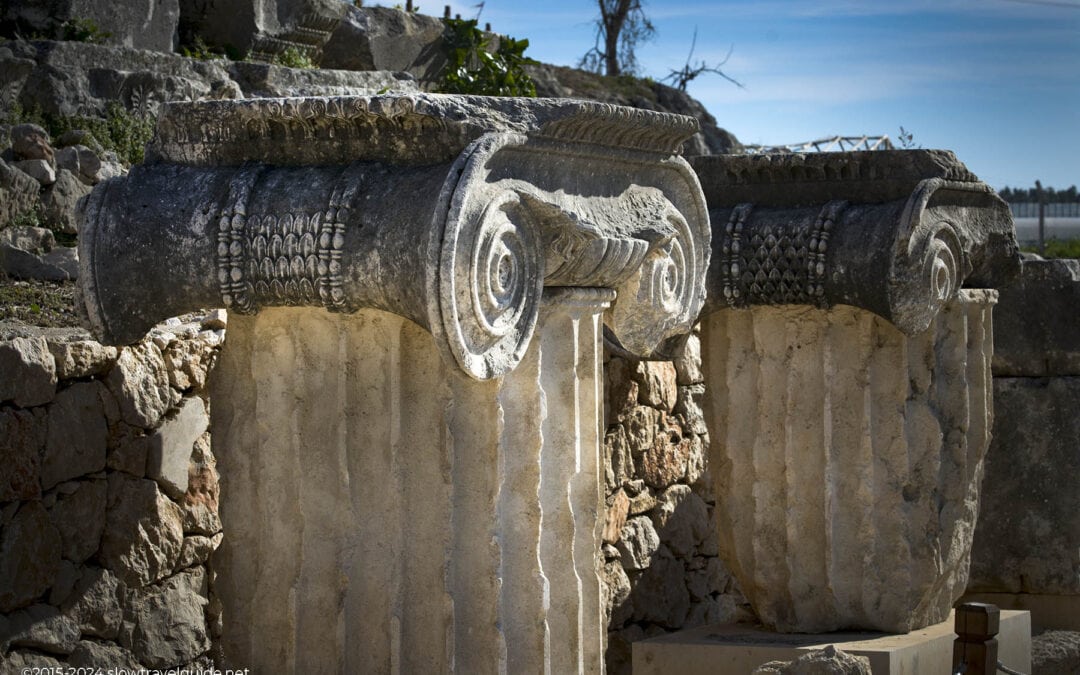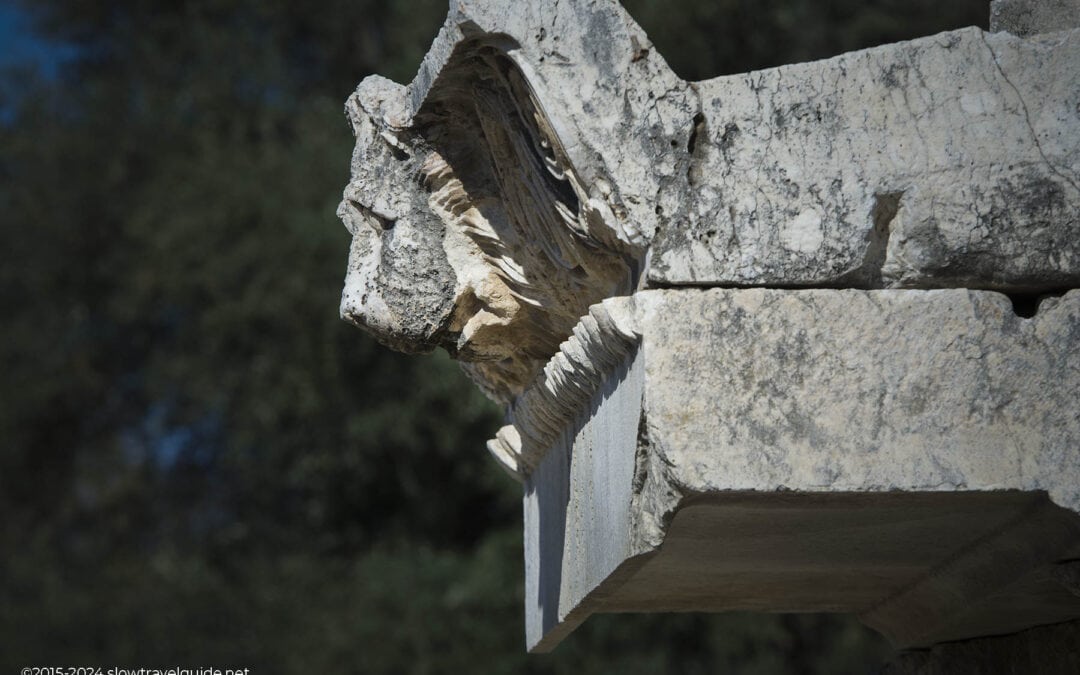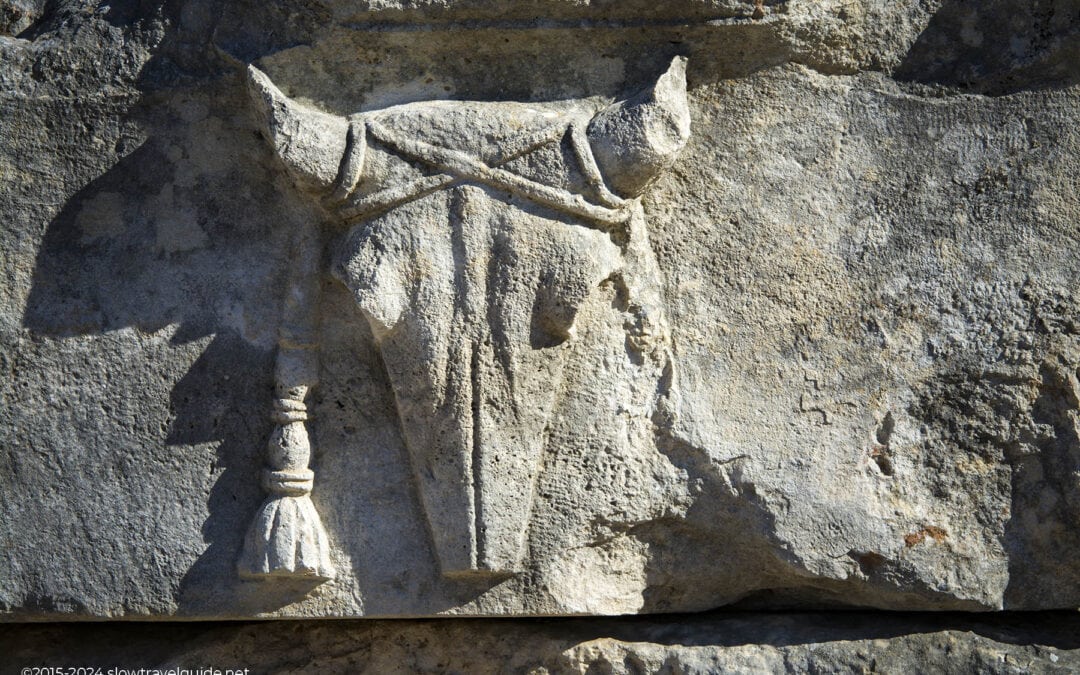LETOON
UNESCO Heritage
By Slowtravelguide
LETOON: THE LYCIAN FESTIVAL VENUE
We enjoy a little bit of cult, and the sacred cult centre of ancient Lycia is Letoon. That in addition to being close to sister site Xanthos was sufficient justification for a visit. Google images of Letoon will show you that the city has a lovely feel to it, with many of the monuments and pillars rising out of the water. At times of the year, it makes excavations and visitors challenging, but it also lends the place a particular charm. Nevertheless, the Museum Directorate made thoughtful efforts to build new routes that would make Letoon more accessible throughout the year.
Porticoes
THE THEATRE AND ITS GATEKEEPER
The theatre is the first and most striking building upon arrival. It is in good shape, and the sidewall has quite an impressive entrance gate. You’ll have to work on your tactics to get past the somewhat original gatekeeper, though.
Theater entry with sheep
Probably the most photographed spot in Letoon is the Porticoes. They are very different, we must confess. Surrounded by water and full of terrapins soaking in the sun, they appear quite otherworldly.
Couple Of Terrapins In The Porticoes
TEMPLES NEXT TO EACH OTHER
Letoon is a cult centre with three temples positioned near to one another. One has lovely pillars in front of it and is devoted to Leto. The last one, with the magnificent mosaic, is for Apollo, while the one in the middle is dedicated to Artemis. The French archaeology team in charge of the Letoon excavations is doing a fantastic job of reconstructing what has been lost to time. Their selection of information boards with meticulously hand-carved inscriptions, crafted from the same stone as the monuments, further demonstrates their attention to detail.
The temples are in the center of the site and require a bit of an effort to imagine what they must have looked like when still in their full glory.
Temple Of Leto In Sunset
We still don’t know the exact year Yediler Monastery was built. Simple stonework techniques were used in the construction process. It is acknowledged that the monastery complex was founded earlier than 960, maybe in the late 10th century, with additional buildings built later, despite the paucity of exact information. The complex as a whole had to be finished in the thirteenth century. Experts concur that the monastery’s construction dates back to the Late Byzantine Era because of its use of cloisonné masonry and ornate brickwork.
The temples are in the center of the site and require a bit of an effort to imagine what they must have looked like when still in their full glory.
THE NYMPHAEUM AND ITS SACRED SPRING
The Nymphaeum and the Basilica are located beyond the temples. According to folklore, the terrapins and frogs in the lake are shepherds who fell prey to Leto’s retaliation. The lesson learned is to avoid messing with Leto! A semi-circular pool was added during the Roman era, which came after the Hellenistic period. The remnants of this pool are easily seen.
Nymphaeum
Letoon is a tiny site with a tonne of lovely touches. You might want to visit a little larger location than this one if you’re only in the area for a short while. However, visitors combine it with nearby site Xanthos for a more complete experience, as it’s a handy stop with nice pedestrian paths. Similar to Xanthos, Letoon is encircled by roads and greenhouses, so as a visitor, you will need to put in more work to truly experience the atmosphere of antiquity.
Letoon is situated in the village of Kumluova, just off the D400 connecting Fethiye to Kalkan. Access to the site is well way-marked. There is an entrance fee to be paid. It is common to visit Xanthos together with Letoon, its so-called sister-site only 5km further up the Eşen Çayı river in Kınık. Please note that a ticket to one site does not give you access to the other.
Click on the link below for current ticket prices and opening times, or read what other travelers have to say on TripAdvisor.
Akyaka
Have you heard of Akyaka? Or Gökova Bay? Don’t worry, many people don’t. Akyaka is a beautiful small village in southwestern Turkey, not far from Marmaris, Datca and Dalaman airports.
Kaunos
The ancient site Kaunos, near Dalyan, is known for its Lycian rock tombs, carved out the rocks overlooking the Dalyan river. An impressive sight and one of the major tourist attractions in the area.
Knidos
Some ancient ruins seem to have it all: a spectacular setting, two harbours, a lighthouse that’s been bombarded with pictures, and some good stories to end it all. Knidos falls into this category.
© 2016-2022 All rights reserved by slowtravelguide.net.
The content of this website is copyright protected and the property of slowtravelguide.net.No part of this website may be reproduced in whole or in part in any manner without the written permission of the copyright owner.
Copyright ©2016-2022 Tüm hakları saklıdır. Bu (slowtravelguide.net.) web sitesinin içeriği koruma altındadır ve slowtravelguide.net.Buradaki hiçbir içerik (yazı,fotoğraf,video vb.) izinsiz olarak kopyalanamaz, alıntı yapılamaz,başka yerde yayınlanamaz.

